In the field of early childhood education, two pioneering approaches have brought about a revolution: Montessori and Reggio Emilia. While their methodologies differ, both share a deep respect for the child as a competent and active learner. By exploring their converging ideologies, we can uncover the synergies that make their union so compelling and offer insights for educators seeking to bridge the two worlds.
Maria Montessori, an Italian physician and educator, introduced a method that emphasized independence, freedom within limits, and the idea that children are naturally eager learners. Her philosophy centers on structured environments tailored to developmental stages, fostering autonomy and a love for learning.
The Reggio Emilia approach, on the other hand, was born out of the town of Reggio Emilia post-World War II and emphasizes a child’s active participation in a community. Educators act as co-learners, and the environment plays a pivotal role as the “third teacher,” fostering creativity, exploration, and social interaction.
Historical Contexts and Foundational Philosophies
Maria Montessori and Loris Malaguzzi observed children and aimed to revolutionize education. Montessori’s approach, established in the early 1900s, focused on creating a “prepared environment” where children have the autonomy to choose and learn from materials that spark their curiosity. The Reggio Emilia approach, developed after World War II, saw children, educators, and the environment as collaborative stakeholders in the learning journey.
Montessori’s approach was influenced by her work with children with disabilities. She believed that children have innate potential waiting to be nurtured and that education should foster independence, self-direction, and a love for learning. The Montessori approach is designed with specific materials and environments tailored to each developmental stage, allowing children to learn at their own pace and cultivate skills for lifelong learning.
The Reggio Emilia approach was developed in response to post-war societal damages and oppressive educational systems. Parents and educator Loris Malaguzzi collaborated to create an approach that views children as capable beings who construct knowledge through interactions with others and their surroundings. The approach emphasizes documenting students’ thoughts and progression to promote reflective practices.
The Child as an Active Participant
Both Montessori and Reggio Emilia methods hold a strong emphasis on the child’s perception and role in their own learning. They diverge in certain aspects, but they both agree that children should be active participants in their education, rather than passive learners. This paradigm shift challenges traditional teacher-centric models and promotes environments where children feel empowered, heard, and respected.
Montessori learning is personalized, allowing children to progress at their own pace and follow their interests. This method encourages children to take control of their learning, which leads to a higher level of engagement and motivation. Montessori teachers are trained to observe and guide children, helping them develop their potential and reach their individual goals.
On the other hand, the Reggio Emilia approach values the group dynamic, believing that collective engagements foster deeper understanding and lead to more meaningful and lasting learning experiences. This method encourages children to collaborate, communicate and share their ideas with others. Reggio Emilia teachers act as facilitators, creating a safe and stimulating environment where children can learn through exploration, play, and discovery.
Despite their distinctive approaches, both methods share the same fundamental belief: that children should be active participants in their education. They prioritize the child’s needs and interests, promoting environments that nurture a lifelong passion for learning, critical thinking, and problem-solving skills. Through these approaches, children develop skills and dispositions that will last a lifetime, enabling them to thrive and succeed in their personal and professional lives.
Role of the Educator: Guide or Co-Learner?
In the realm of early childhood education, two distinct approaches to teaching have emerged: the Montessori method and the Reggio Emilia approach. Both philosophies aim to create a more child-centered, dynamic, and responsive educational experience for young learners.
The Montessori method is characterized by meticulous observation of children to tailor the learning environment to their unique developmental needs. Teachers in this approach are attuned to the individual abilities and interests of each child and use this information to guide their instruction. The Montessori method is focused on allowing children to explore and learn at their own pace, with an emphasis on hands-on learning and self-discovery.
In contrast, the Reggio Emilia approach sees teachers as co-learners, actively participating in discussions and immersing themselves in the learning process alongside their students. The goal of this approach is to foster a sense of community and collaboration within the classroom, with teachers and students working together to shape experiences and facilitate discoveries. Reggio Emilia teachers are attentive to the evolving interests of their students and use this information to guide the direction of instruction.
Both the Montessori and Reggio Emilia approaches represent a departure from traditional educational models, emphasizing responsiveness, interaction, and support for each child’s unique educational journey. By nurturing innate curiosity and potential, these approaches help to create a more dynamic and engaging educational experience for young learners.
Environment: The Silent Teacher
Aspects of the Montessori and Reggio Emilia teaching methods recognize the importance of the learning environment in a child’s development. Montessori classrooms provide materials that encourage cognitive and motor skill development based on each child’s developmental stage. On the other hand, the Reggio Emilia approach views the environment as a reflection of the community’s values, culture, and interests. The aesthetics and ambiance of the classroom promote exploration and interpretation of the surroundings. Both methods emphasize the pivotal role of the teacher in shaping experiences and facilitating learning. Montessori teachers act as guides to assist in learning, while Reggio Emilia teachers act as co-learners and researchers who collaborate with students. Ultimately, both methods acknowledge the teacher’s integral part in nurturing the innate curiosity and potential of every child.
Documentation and Reflection
In Reggio Emilia’s philosophy, documenting the learning process is important and not exclusive to it. Educators and children use photographs, recordings, and transcriptions to reflect on their experiences and construct new knowledge. The Montessori approach also values documentation, particularly in capturing and celebrating children’s learning trajectories. Both philosophies prioritize these aspects in different ways. Let’s explore the importance of documentation and reflection in these approaches.
The Montessori Method emphasizes careful documentation of a child’s developmental progress. Educators meticulously record individual learning trajectories, noting the child’s interactions with various educational materials. Montessori educators also encourage children to reflect on their learning experiences, promoting self-awareness and a deeper understanding of the learned concepts.
In Reggio Emilia’s philosophy, documentation and reflection are viewed collaboratively, with emphasis on the following aspects: transparency of the learning process, displaying children’s thoughts, theories, and creative output prominently to encourage community engagement and collaborative reflection. This approach involves detailed notes, photographs, and even transcriptions of children’s conversations. The rich repository of materials helps reflect upon and interpret children’s thinking, facilitating deeper exploration of the topics at hand.
A Fusion for the Future
The intersection of Montessori and Reggio Emilia’s educational approaches can create a dynamic and responsive educational landscape for young children. By combining the structured progression of Montessori with the fluid explorations of Reggio Emilia, educators can offer children a rich tapestry of experiences that honor their individualities and commonalities.
Both Montessori and Reggio Emilia have been highly praised for their unique and effective educational methodologies. Montessori emphasizes structure, order, and self-directed learning, while Reggio Emilia values exploration, creativity, and collaboration. By fusing these two methodologies, educators can provide a well-rounded approach to early childhood education that celebrates each child’s individual strengths, fosters their curiosities, and maximizes their potential.
This fusion of Montessori and Reggio Emilia’s approaches sets the stage for a future where the child is truly at the center of their learning journey. The child is surrounded by an environment and methodologies that nurture, challenge, and inspire. By harnessing the strengths of these two approaches, we pave the way for a more holistic, responsive, and empowering educational environment for future generations. This approach recognizes the unique needs and strengths of each child and adapts to them, rather than trying to fit each child into a one-size-fits-all approach.
To sum up, combining Montessori and Reggio Emilia is not a matter of choosing one over the other. It’s about embracing the fundamental principles of both and acknowledging how they can complement and improve each other. By doing so, we demonstrate our commitment to valuing the multifaceted nature of childhood and the endless possibilities that every learner possesses. When we think about the vast field of early childhood education, it’s clear that the methods developed by Maria Montessori and Reggio Emilia educators are towering examples. These approaches, based on respect for the child and a deep understanding of their developmental needs, have transformed countless lives. However, standing at the crossroads of these methodologies, a more powerful vision emerges – one that’s greater than the sum of its parts. Ultimately, it’s our responsibility as educators, parents, and stakeholders in the future of our world to explore, adapt, and potentially merge these groundbreaking pedagogies. By uniting them, we might just unlock the boundless potential within every child.


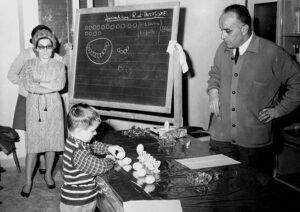
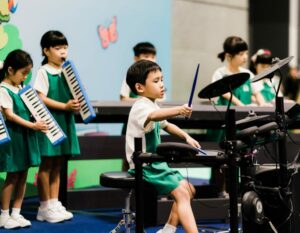

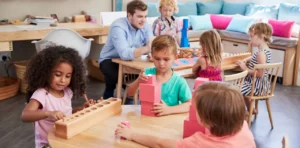
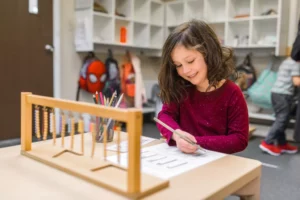

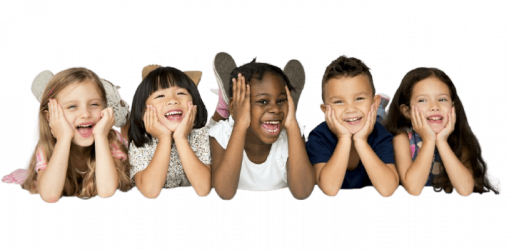


2 Responses
test
tes